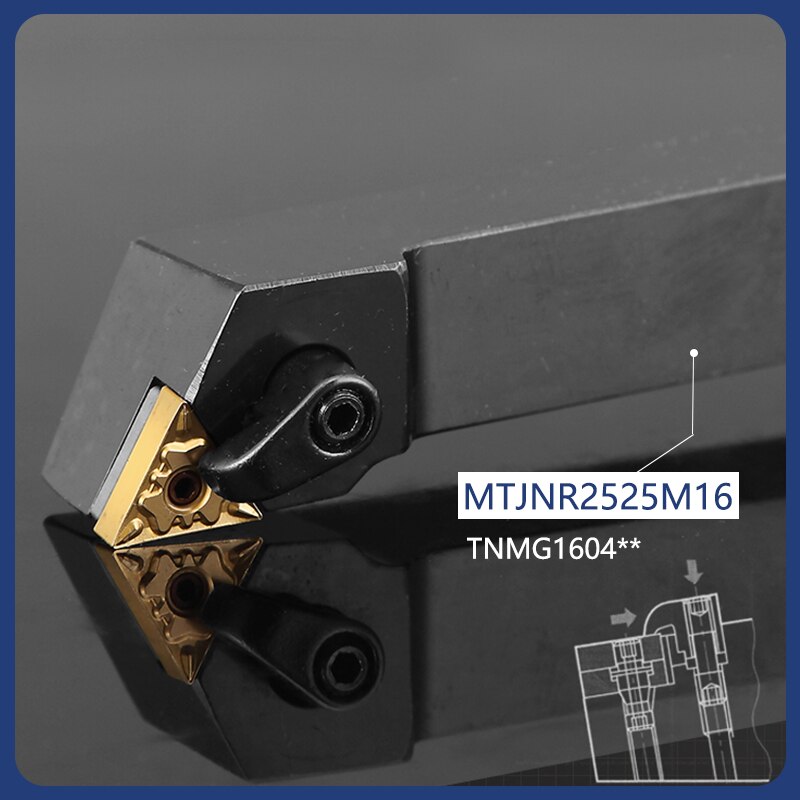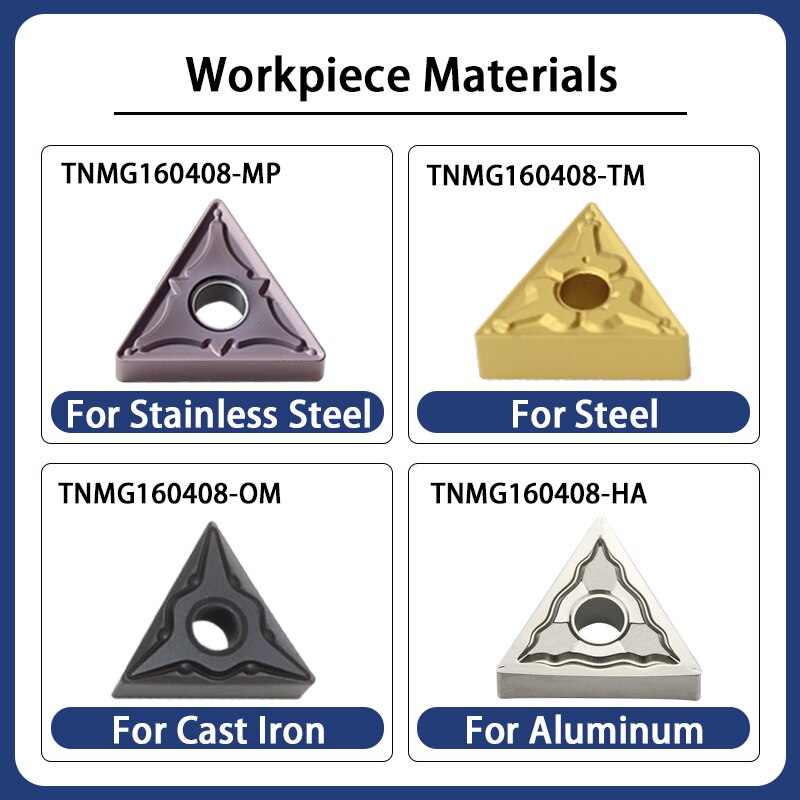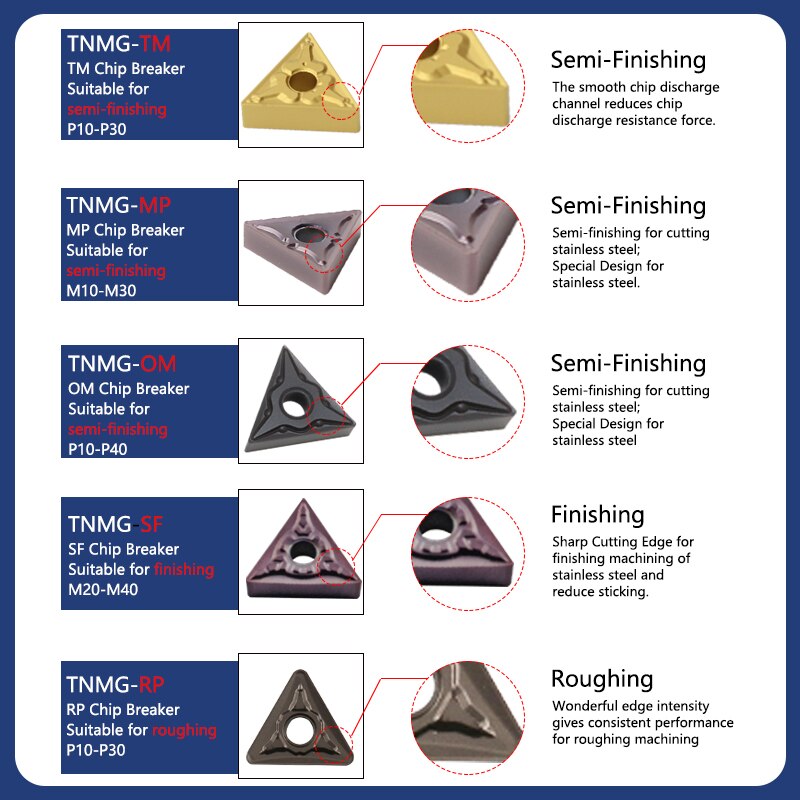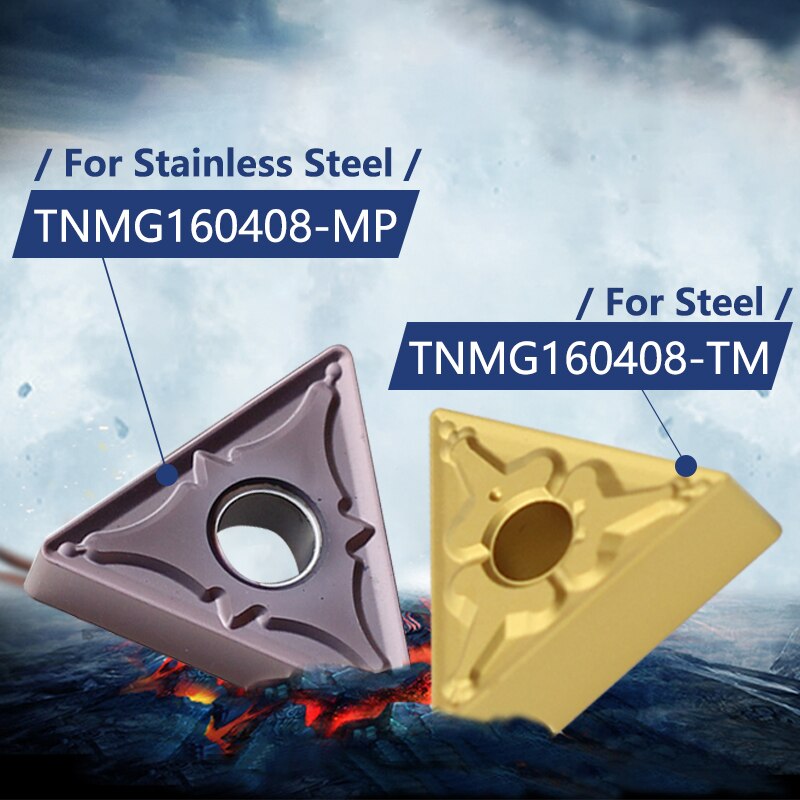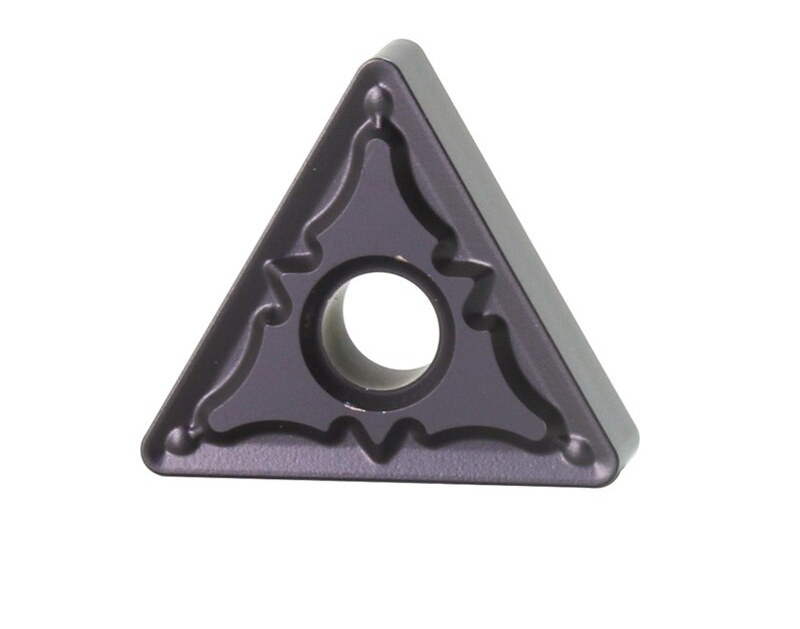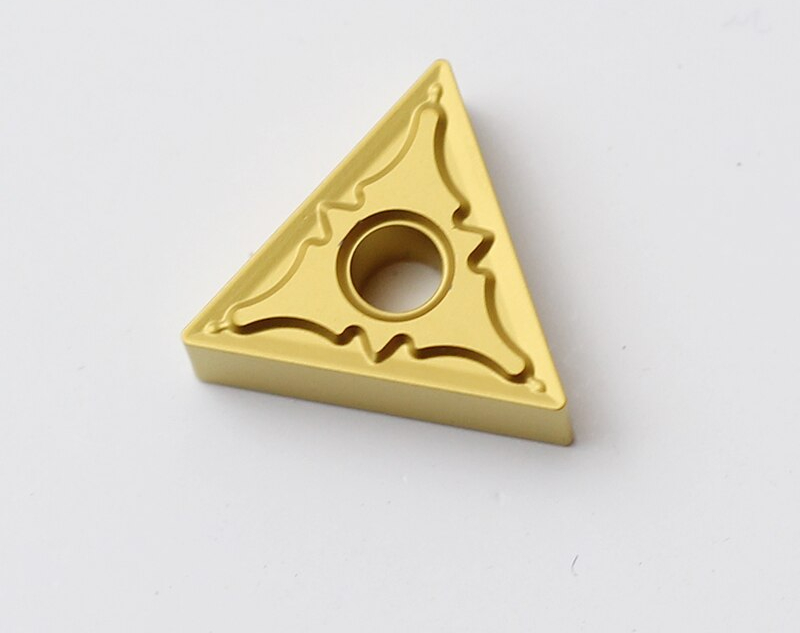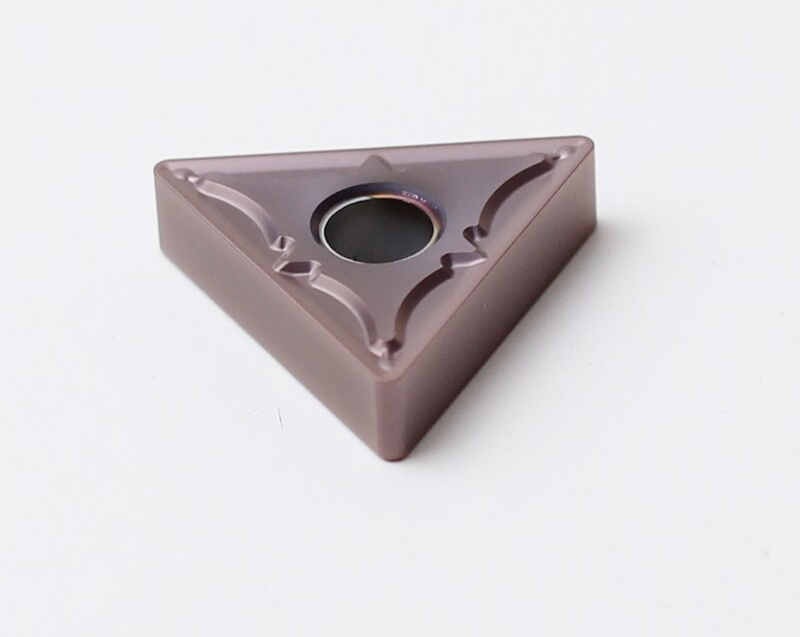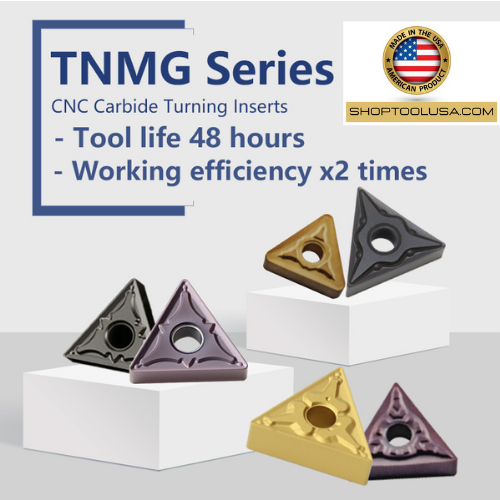
Carbide Insert turning grade table
GRADE | COATING | COLOR | WORKING MATERIAL | APPLICATION |
| SP8025 | CVD (MT-TiCN+Al2O3+TiN) | golden yellow | P10-P30 | The carbide substrate have good anti-deformation resistance and toughness. MT-TiCN+Al2O3+TiN coating has very good surface quality and help t recognize wear easily. It is suitable for semi-finishing and finishing steel machining. |
| SP8125 | CVD (Multi-TiCN+Al2O3) | black | P10-P40 | The carbide substrate have mild cobalt content and high cubic content, combining with thick TiCN and Al2O3, treated by sepcial technology after coating treatment, which gives inserts strong wearing resistance. It is prority for semi-finishing to finishing steel machining. |
| SM8020 | PVD (Silicon+TiAlN) | purple | M10-M30 | Micro WC grain substrate with high Co maintain cutting edge strength and it has smallest coefficient of friction and good nano hardness with good thermal stability silicon coating. The grade is very good for interrupt turning and milling for stainless steel |
| SK8010 | CVD (thick TiCN+ textured Al2O3) | black | K10-K30 | The medium-coarse substrate combine with thick TiCN and textured Al2O3, after special coating treatment, it has strong wear-resistance. The grade is suitable for high-speed semi-finishing cast iron turning under stable working condition. |
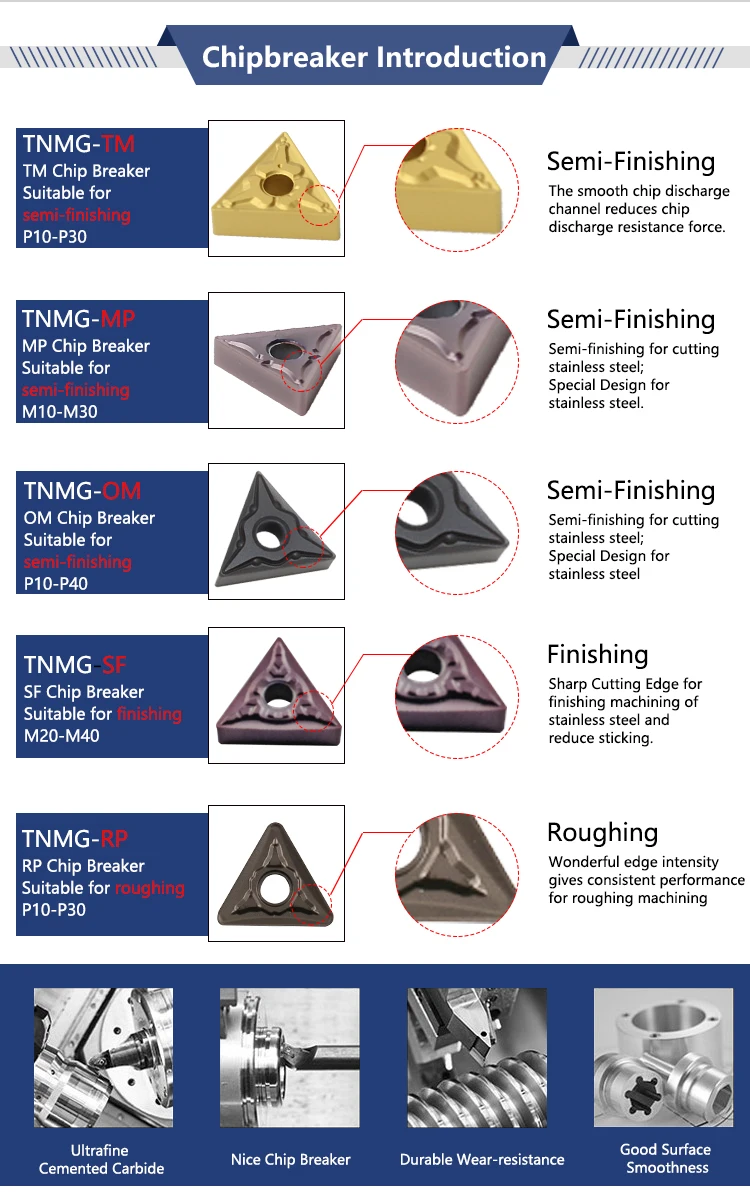

When it comes to determining the feed and speed for a turning operation in steel using a carbide insert TNM432 with a coated TiAlN, there are several factors to consider. These factors include the material being machined, the desired surface finish, the machine’s capabilities, and the specific cutting conditions. While I can provide you with some general guidelines, please note that it’s always best to consult the manufacturer’s recommendations and perform test cuts to optimize the parameters for your specific setup. Here are some suggested starting points:
1. Cutting Speed (Surface Speed):
The cutting speed refers to the speed at which the workpiece rotates in relation to the cutting tool. It is usually measured in surface feet per minute (SFM) or meters per minute (m/min). For steel machining with a coated carbide insert, a starting point for cutting speed can range from 200 to 500 SFM (60 to 150 m/min). However, it’s crucial to refer to the insert manufacturer’s recommendations for the specific coating and material being machined.
2. Feed Rate:
The feed rate determines how fast the cutting tool moves along the workpiece during each revolution. It is typically measured in inches per revolution (IPR) or millimeters per revolution (mm/rev). The feed rate depends on factors such as the depth of cut and the desired chip load. As a starting point, you can consider a feed rate ranging from 0.003 to 0.015 inches per revolution (0.08 to 0.38 mm/rev).
3. Depth of Cut:
The depth of cut refers to the amount of material removed with each pass of the cutting tool. It is usually measured in inches (in) or millimeters (mm). The depth of cut depends on the rigidity of the setup and the specific insert geometry. As a starting point, you can consider a depth of cut ranging from 0.020 to 0.100 inches (0.5 to 2.5 mm). However, it’s essential to ensure that the cutting forces and the machine’s capabilities can handle the chosen depth of cut.
4. Coolant and Lubrication:
When performing steel turning operations, it is generally recommended to use an appropriate coolant or lubricant to reduce heat and prolong tool life. Coolants help dissipate heat from the cutting zone and improve chip evacuation, while lubricants can reduce friction and tool wear. Follow the manufacturer’s recommendations for the specific insert and coolant/lubricant selection.
Remember, these suggested parameters are just starting points and may vary depending on the specific steel grade, workpiece condition, and machine setup. It’s crucial to monitor the machining process closely, adjust the parameters as necessary, and conduct test cuts to optimize the feed and speed for your specific application.
Please consult the insert manufacturer’s documentation for precise recommendations on feed and speed rates for your specific carbide insert and coating combination.
I hope this information helps you get started with your turning operation. If you have any further questions, please feel free to ask!


